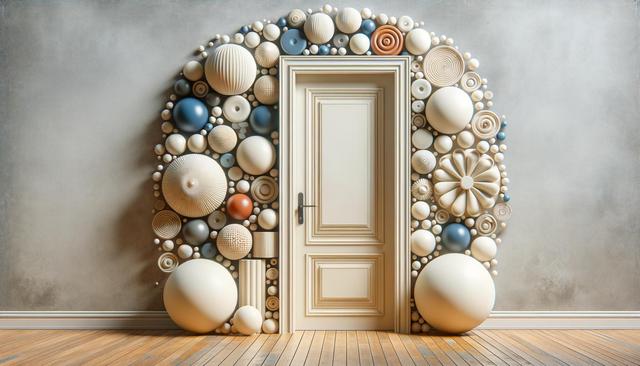Choosing the Right Material for Your Entry Door
When exploring front door options, one of the most important decisions involves choosing the right material. The material impacts not only the look and feel of your door, but also its security, energy efficiency, and maintenance requirements. Common choices include wood, steel, and fiberglass, each offering unique advantages. Wooden entry doors are valued for their classic appearance and natural warmth. However, they require regular upkeep to protect against moisture and weather damage. Steel doors, on the other hand, provide exceptional strength and resistance to forced entry, making them a practical option for enhanced security. Fiberglass doors offer a versatile balance, often designed to mimic the appearance of wood while being more resistant to wear and tear.
Factors such as climate, budget, and desired aesthetic should all be considered when selecting a door material. For instance, in regions with extreme weather, fiberglass or insulated steel may provide better long-term performance. Regardless of the material you choose, look for options that are certified for energy efficiency and come with robust warranties.
Enhancing Security Through Entry Door Features
Security is a major concern for many homeowners, and a thoughtfully selected entry door can significantly improve your home’s protection. Modern entry doors come with a range of built-in security features designed to deter intrusions and safeguard your property. Solid-core construction, reinforced frames, and multi-point locking systems are among the most effective features to consider.
Additional elements that can boost door security include:
- Smart locks with keyless entry
- Strike plates reinforced with longer screws
- Deadbolts with anti-drill and anti-pick technology
- Security-rated glass inserts with laminated or tempered glass
It’s also important to ensure that the installation is done professionally. Even the most secure door may underperform if not installed correctly. Tight seals and precise alignment help prevent unauthorized access while also improving insulation.
Balancing Aesthetic Appeal with Functionality
Your front door is one of the first things visitors notice, and it plays a central role in defining your home’s curb appeal. Fortunately, you don’t have to sacrifice style for function. Entry doors are available in a wide variety of designs, colors, finishes, and decorative elements such as sidelights and transoms. Whether your home has a traditional, modern, or rustic style, there are entry door designs that can complement and enhance its appearance.
Popular design elements include:
- Panel configurations with raised or recessed detailing
- Decorative glass inserts with privacy and style options
- Custom hardware to match your home’s exterior finishes
- Paintable or stainable surfaces for personalized colors
When choosing a door for aesthetic purposes, consider how it aligns with other elements of your exterior, such as the façade, windows, and roofline. A cohesive look boosts the overall appeal and potentially increases the value of your home.
Boosting Energy Efficiency with Modern Door Technology
Entry doors play a crucial role in your home’s energy performance. Poorly sealed or outdated doors can lead to significant heat loss, driving up energy bills and reducing indoor comfort. Modern doors, however, often incorporate advanced insulation materials and weather-resistant seals to minimize thermal transfer. Features such as insulated cores, low-E glass, and tight weatherstripping contribute to better energy efficiency.
When shopping for an energy-efficient entry door, look for:
- Energy Star certification
- High R-value insulation
- Thermal breaks to limit heat conduction
- Durable weather seals along all edges
These advancements not only reduce energy consumption but also contribute to a quieter indoor environment by minimizing noise infiltration. Over time, the energy savings and added comfort can offset the initial investment in a high-quality entry door.
Installation and Maintenance Considerations
Proper installation and ongoing maintenance are key to maximizing the performance and longevity of your entry door. A professional installer ensures that the door fits the frame precisely, operates smoothly, and seals tightly to prevent drafts and water intrusion. Poorly installed doors can lead to issues such as sticking, uneven wear, and reduced security.
Maintenance needs vary depending on the door material. For example:
- Wooden doors may require periodic staining or painting
- Steel doors may need occasional touch-ups to prevent rust
- Fiberglass doors typically need only light cleaning and minimal upkeep
Regular inspections can help catch minor issues before they become major problems. Check for signs of wear on weatherstripping, hinges, locks, and the door surface. Keeping your entryway in good condition not only preserves its appearance but also ensures continued performance in all areas—security, energy efficiency, and curb appeal.
Conclusion: Making a Smart Investment in Your Home
Choosing the right entry door is a practical and aesthetic decision that can have lasting impacts on your home’s security, efficiency, and visual charm. By exploring the many options available and considering your specific needs, you can find a door that not only protects your home but also enhances its overall appearance. Whether you prioritize style, durability, or energy savings, a well-chosen front door offers long-term value and functionality. With professional installation and proper care, it becomes a smart upgrade that pays dividends in comfort, security, and curb appeal for years to come.




Leave a Reply